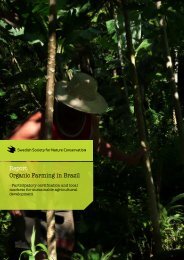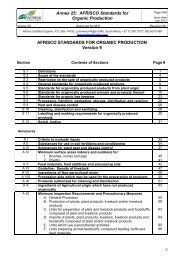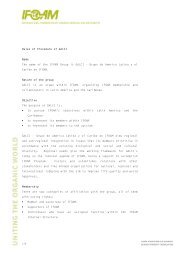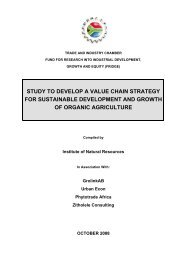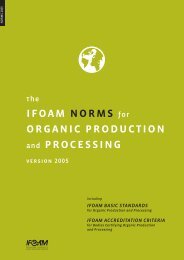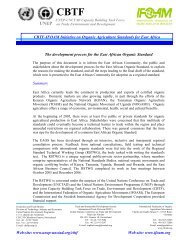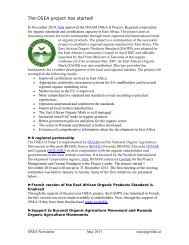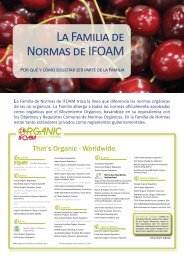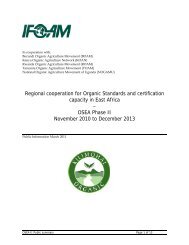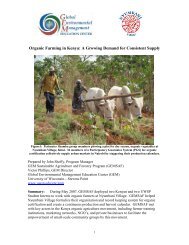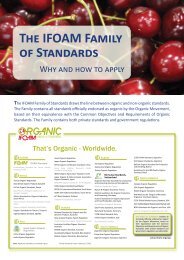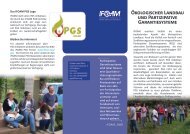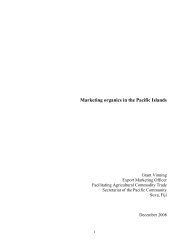OSEA I Project Report - ifoam
OSEA I Project Report - ifoam
OSEA I Project Report - ifoam
You also want an ePaper? Increase the reach of your titles
YUMPU automatically turns print PDFs into web optimized ePapers that Google loves.
DEVELOPMENT OF A REGIONAL ORGANIC AGRICULTURE STANDARD IN EAST AFRICA 2005-2007<br />
The existence of the East African Community and its joint standardization was an advantage.<br />
The stakeholders have a strong feeling for the East African idea, and it saved considerable effort<br />
in not having to develop a unique governance structure for the organic standard. Nevertheless<br />
it still remains to be seen whether the EAC standardization process will allow for sufficient<br />
stakeholder engagement when the standard is revised in the future.<br />
Notably, many stakeholders already had considerable experience from organic standards and<br />
certification, and national standards already had been developed. This means that they already<br />
knew how standards could be drafted to suit local conditions. It also meant that they had basic<br />
skills in formulating standards. This was further enhanced by the participation of experts from<br />
the national bureaus of standards. Starting a regional standards process without these experiences<br />
will require much more capacity building. It will inevitably make the process slower.<br />
Standard setting is, or should be, a participatory activity, and a lot of people participated in this<br />
process. At the same time, formulation of standards is a craft that needs concentration and<br />
many checks to ensure the standard is consistent (a change in one place may lead to a contradiction<br />
with another section, or change the meaning of other parts). The East African Organic<br />
Products Standard was developed with strong technical support, both for the process and the<br />
content. Without that support, the task would not have been accomplished easily.<br />
With the adoption of the EAOPS and the EAOM and with the development of a local certification<br />
structure there is now an institutional framework for the development of the organic sector—a<br />
frame that still needs strengthening. Consumer awareness is still low and considerable<br />
efforts are needed to increase it. There is also a need to strengthen capacity on many levels,<br />
ranging from farmers’ groups to service providers (extension, certification) and from sector<br />
bodies to governments.<br />
25



